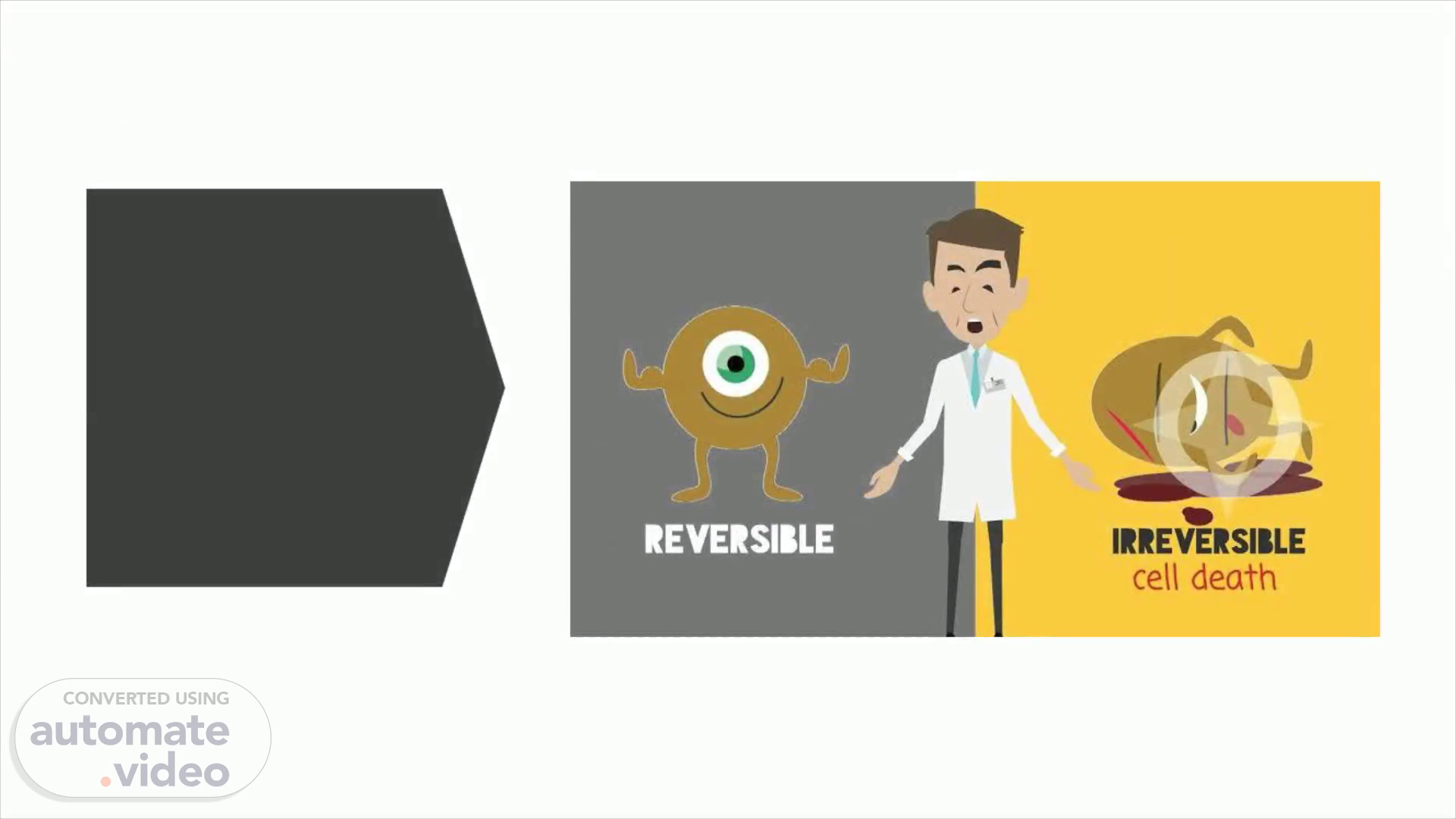Scene 1 (0s)
CELL INJURY. REVERSIBLE IRREVERSIBLE cell death.
Scene 2 (7s)
CELL INJURY. Cell Injury detachment Lysosomal rupture Normal cell Membrane blebbing Reversible injury swelling Cellular swelling Endoplasmic reticulum swelling Irreversible injury T Mitochondrial Nuclear c permeability • pyknosis ( Nuclear chromatin clumping • Karyorrhe • Karyolysis.
Scene 3 (25s)
MECHANISM OF CELL INJURY. Mild injury Reversible injury Injurious stimulus rmal cell homeostasis steady state) Stress Adaptation: Hypertrophy Hyperplasia Atrophy Metaplasia Severe injury Cell injury Irreversible injury Necrosis Adaptive responses exceeded or significant damaging insults Apoptosis.
Scene 4 (36s)
REVERSIBLE CELL INJURY. 000 00 O Reversible injury Myelin fGure NORMAL CELL Swelling of endoplasmic reticulum and mitochondria Membrane blebs.
Scene 5 (52s)
IRREVERSIBLE CELL INJURY. Irreversible cell injury is one of the more severe and long-lasting cell injuries that lead to cell death by necrosis or apoptosis The two types of cellular responses occurred by irreversible cell injury are necrosis and apoptosis..
Scene 6 (1m 10s)
Difference Between Reversible and Irreversible Cell Injury.
Scene 7 (1m 35s)
REVERSIBLE CELL INJURY. IRREVERSIBLE CELL INJURY A type of cell injury that can return to the steady state by altering cellular conditions One of the severe types of cell injury, which leads to the cell death Can return to the normal position Has passed the point of no return Sub-lethal and short-acting Lethal Lethal and long-lasting Caused by lack of oxygen (hypoxia or ischemia or blood flow to the cells Caused by immunological responses or viral infections Results in cellular swelling and fat accumulation Results in necrosis and apoptosis Can be treated with drugs Leads to permanent cell loss.
Scene 8 (2m 2s)
ASMITHA KESHALI R. Tick.
